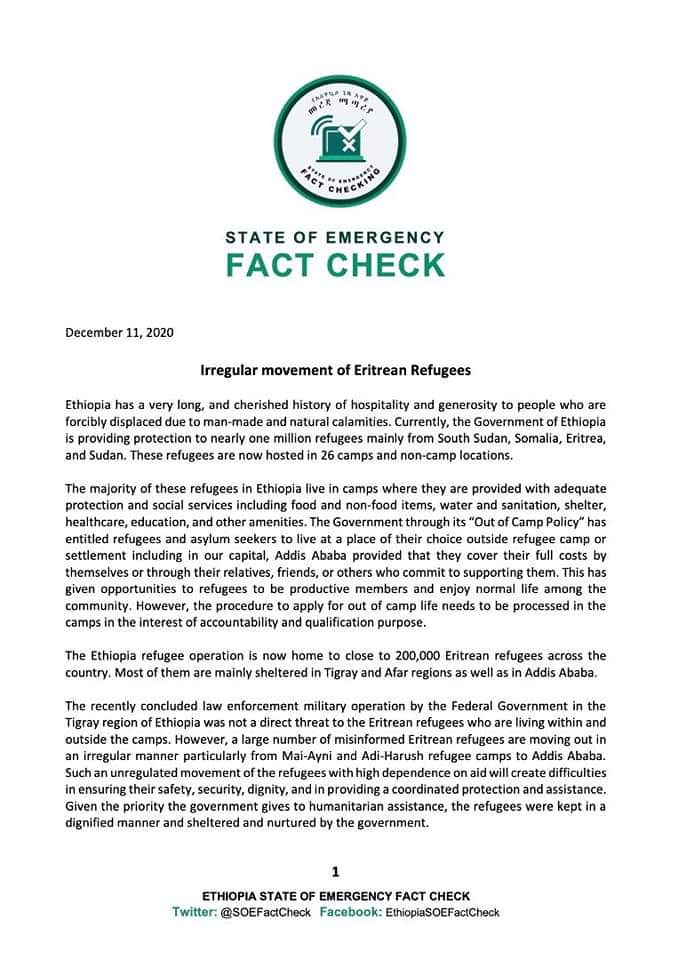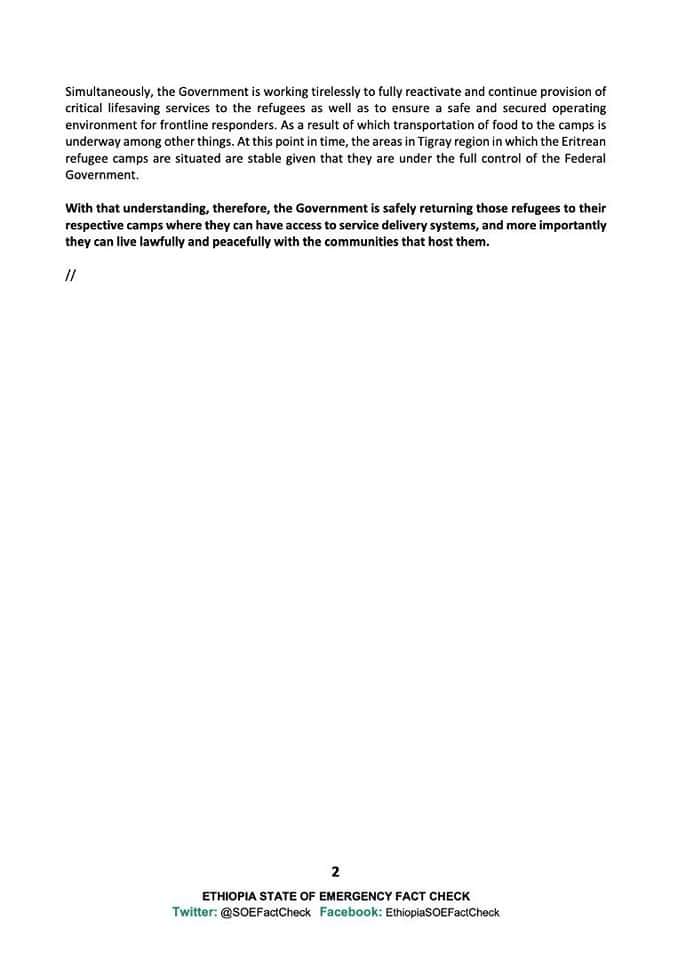Ethiopia has a very long, and cherished history of hospitality and generosity to people who are forcibly displaced due to man-made and natural calamities. Currently, the Government of Ethiopia is providing protection to nearly one million refugees mainly from South Sudan, Somalia, Eritrea, and Sudan. These refugees are now hosted in 26 camps and non-camp locations.
The majority of these refugees in Ethiopia live in camps where they are provided with adequate protection and social services including food and non-food items, water and sanitation, shelter, healthcare, education, and other amenities. The Government through its “Out of Camp Policy” has entitled refugees and asylum seekers to live at a place of their choice outside refugee camp or settlement including in our capital, Addis Ababa provided that they cover their full costs by themselves or through their relatives, friends, or others who commit to supporting them. This has given opportunities to refugees to be productive members and enjoy normal life among the community. However, the procedure to apply for out of camp life needs to be processed in the camps in the interest of accountability and qualification purpose.
The Ethiopia refugee operation is now home to close to 200,000 Eritrean refugees across the country. Most of them are mainly sheltered in Tigray and Afar regions as well as in Addis Ababa.
The recently concluded law enforcement military operation by the Federal Government in the Tigray region of Ethiopia was not a direct threat to the Eritrean refugees who are living within and outside the camps. However, a large number of misinformed Eritrean refugees are moving out in an irregular manner particularly from Mai-Ayni and Adi-Harush refugee camps to Addis Ababa. Such an unregulated movement of the refugees with high dependence on aid will create difficulties in ensuring their safety, security, dignity, and in providing a coordinated protection and assistance. Given the priority the government gives to humanitarian assistance, the refugees were kept in a dignified manner and sheltered and nurtured by the government.
Simultaneously, the Government is working tirelessly to fully reactivate and continue provision of critical lifesaving services to the refugees as well as to ensure a safe and secured operating environment for frontline responders. As a result of which transportation of food to the camps is underway among other things. At this point in time, the areas in Tigray region in which the Eritrean refugee camps are situated are stable given that they are under the full control of the Federal Government.
With that understanding, therefore, the Government is safely returning those refugees to their respective camps where they can have access to service delivery systems, and more importantly they can live lawfully and peacefully with the communities that host them.
ETHIOPIA STATE OF EMERGENCY FACT CHECK Twitter: @SOEFactCheck Facebook: EthiopiaSOEFactCheck






